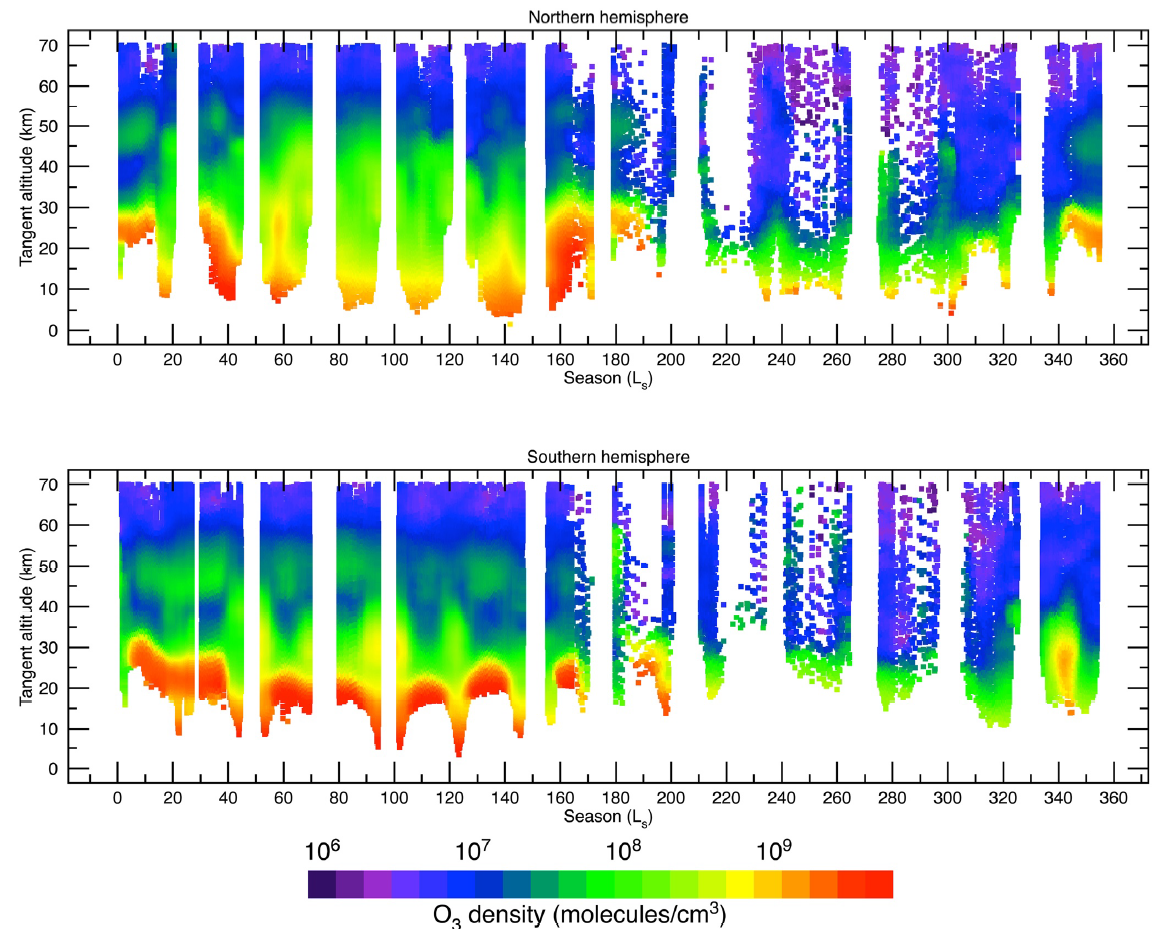https://doi.org/10.1029/2021JE006834
Alain SJ. Khayat, Michael D. Smith, Michael Wolff, Frank Daerden, Lori Neary, Manish R. Patel, Arianna Piccialli, Ann C. Vandaele, Ian Thomas, Bojan Ristic, Jon Mason, Yannick Willame, Cedric Depiesse, Giancarlo Bellucci, José Juan López-Moreno.
Solar occultations performed by the Nadir and Occultation for MArs Discovery (NOMAD) ultraviolet and visible spectrometer (UVIS) onboard the ExoMars Trace Gas Orbiter (TGO) have provided a comprehensive mapping of atmospheric ozone density. The observations here extend over a full Mars year (MY) between April 21, 2018 at the beginning of the TGO science operations during late northern summer on Mars (MY 34, Ls = 163°) and March 9, 2020 (MY 35). UVIS provided transmittance spectra of the Martian atmosphere allowing measurements of the vertical distribution of ozone density using its Hartley absorption band (200 – 300 nm). The overall comparison to water vapor is found in the companion paper to this work (Patel et al., 2021). Our findings indicate the presence of (1) a high-altitude peak of ozone between 40 and 60 km in altitude over the north polar latitudes for at least 45 % of the Martian year during mid-northern spring, late northern summer-early southern spring, and late southern summer, and (2) a second, but more prominent, high-altitude ozone peak in the south polar latitudes, lasting for at least 60 % of the year including the southern autumn and winter seasons. When present, both high-altitude peaks are observed in the sunrise and sunset occultations, suggesting that the layers could persist during the day. Results from the Mars general circulation models predict the general behavior of these peaks of ozone and are used in an attempt to further our understanding of the chemical processes controlling high-altitude ozone on Mars.

Seasonal distribution of the retrieved vertical O3 abundance (molecules/cm3) in the northern (upper panel) and southern (lower panel) hemispheres. The results are shown after applying a two-dimensional convolution of ∆Ls= 5 ° in the local time dimension (x axis) and ∆𝑧 = 3 km in the altitude dimension (y axis). The high-altitude peaks of ozone are visible in both hemispheres during northern spring (southern fall).

